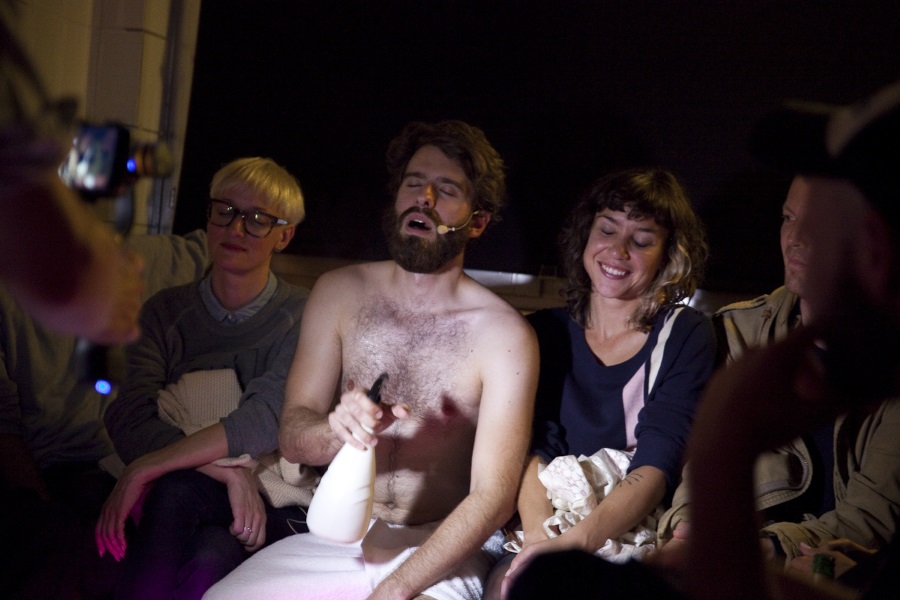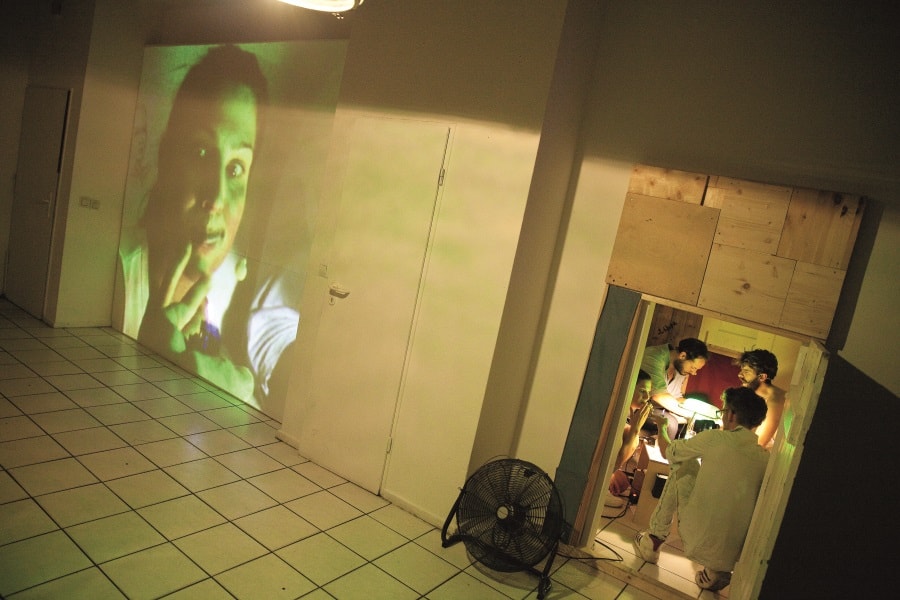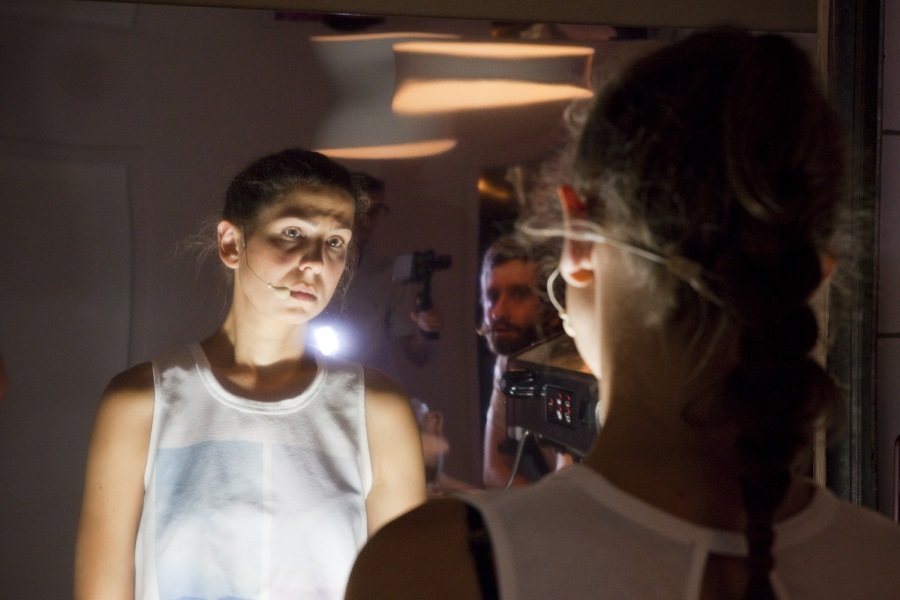I think we can all agree that the scariest part of Back to the Future is when Marty McFly’s hand disappears.
You know the scene. At the Enchantment Under the Sea Dance, Marty, played by Michael J. Fox, strums “Earth Angel” on the guitar while his future parents dance. But a jerky bully—is it Biff?—cuts in, steals Lorraine from Marty’s dad, and starts groping her. George, Marty’s future father, in his nerdtastic way, isn’t sure how to respond.
Meanwhile, the chords to “Earth Angel” start to sound strained and off-melody. Marty looks at a family photo, tucked into his Fender, and the images of him and his siblings begin to peter out. We cut back to Marty’s mother fighting off the sexual advances of the bully. As her struggle continues, we cut back to Marty, who realizes his future existence is literally being threatened the more his future father stalls! Terrified, Marty holds up his hand—which it shimmers and then literally disappears for a moment. Cut to George, who shoves the bully away from Lorraine before going in for the smooch. Instantly Marty regains strength, the portraits in the family photo pop back into Technicolor, the chords correct themselves, and the future, for a moment anyway, seems secure.
It’s no mistake that copy & waste, a German performance group, and English Theatre Berlin | International Performing Arts Center, are using the Back to the Future trilogy as the bedrock for their bilingual show Ruckzuck in die Zukunft, or Knick-Knack to the Future. The groups have created a concept store that sells a variety of merchandise by day but becomes a performance piece/time travel meditation on gentrification by night. Devised and performed by Jörg Albrecht, Daniel Brunet, Lisa Flachmeyer, Roman Hagenbrock, Steffen Klewar, Laura Landergott, Caspar Pichner, and Daniel Sauermilch, Ruckzuck recently bowed in Berlin, at the Ringlokschuppen in Mülheim, Germany, and in Graz, Austria.

For Germans, it’s not love that threatens a future existence; it’s rising rents. Since 2007 rents in Berlin, Munich, and Frankfurt have gone up by as much as 30 and 40 percent, prompting the government to introduce rent caps in an effort to prevent tenants from being priced out. Meanwhile, people keep moving to Europe’s art capital.
Even a first-time visitor to Berlin feels the effects of the recent changes. The Airbnb where I stay, on the fourth floor of a prewar apartment building, sits in Kreuzberg, a ridiculously trendy quarter. Boutique clothing shops, adorable restaurants, and inviting cafés dot the tree-lined streets. There an impossibly hip set of twenty- to fortysomethings seems to drink coffee professionally. Are they a leisure class? Living the freelance dream? Or simply unemployed? (Berlin has Germany’s highest unemployment rate.)
The name of the first Internet network to pop up at my Airbnb was “STOP GENTRIFICATION!” So much for feeling wilkommen. In fact, one hears as much English as German spoken on the bike paths, in the trains, and on the cobblestoned streets. It’s all a bit surreal…
Ok, but not as surreal as hoverboards. You may recall that Back to the Future II imagines Marty McFly, and his town of Hill Valley, in 2015. While Berlin doesn’t have the futuristic trappings that the movie imagined, it has certainly changed a lot since 1985, the year the first Back to the Future came out. (Nothing major, just the Wall came down, reunification happened, the economy collapsed.)
I stop by a rehearsal during an August heat wave. The artists smoke cigarettes amid open-air construction on the top floor of a building with old-school graffiti; they are knocking down walls for their concept store, which sits next to the Kotbusser Tor metro station, an area once known for its Turkish immigrant population and proximity to the Berlin Wall. The area now bustles with energy, boasting a spate of döner kebab shops and gleefully nibbling tourists.

“We’re using the mythology of Back to the Future because we know our audience will be familiar with the trilogy,” says Steffan Klewar, a director and actor with copy & waste. “So the film helps us move through time and space, but it also allows for abstraction.”
“The fictional lens has a structure from which we can then explore important political topics,” says co-deviser and performer Daniel Brunet, who helms English Theatre Berlin | International Performing Arts Center and conceived the piece together with copy & waste.
In a way, Ruckzuck started well before its public performances, when copy & waste and English Theatre Berlin | International Performing Arts Center announced to the press that their venue, a popular alternative concert space in a former doctor’s office, was closing and that a cupcake café was opening. Says writer Jörg Albrecht, “Even though it’s a fake”— the performance venue isn’t closing down—“the melancholy or rage it sparks in people is real. People are noticing that their spaces will be lost in a few years. Warning and rage are powerful emotions—and sometimes you can produce these emotions through art.”
The group emphasizes that Ruckzuck is not a satire, nor is it accusatory. “We want to explore the myth of gentrification and who gets blamed and who is deemed innocent,” says Klewar. “It’s not always the artists’ fault—local governments play a role in this, too.”
“We don’t even use the word ‘gentrification’ in the piece,” notes Brunet. “We want to use this project to invite the audience to think about what our city is and what kind of city we want to live in. Hill Valley is all cities.”
Brunet, who grew up in U.S. but now resides in Germany, has seen the changes in Berlin and Bushwick, Brooklyn (where he used to split his time) firsthand. He emphasizes the concept store element of Ruckzuck—which roughly translates to “in a jiffy,” and also references a trashy German TV show from the ’80s. “When we offer the time-travel meditations at night, we will always stop if someone wants to buy something,” he says. Concept store merchandise includes high-end clothing, tote bags, coffee, cupcakes (of course), and Calvin Klein underwear. There is also a tattoo room and shoe area. “We’re selling tattoos and shoes,” Brunet says. And then, with punful abandon, he adds, “It’s a store and a story.”
“It’s time travel, because we are setting an alarm,” writer Albrecht adds. “If you don’t wake up now, then look what will happen to your city. The bar downstairs from here? It’s the bar version of a cupcake café.”
A choice excerpt from Ruckzuck:
Daniel: Has your neighborhood become upscale? If you want to rate how upscale your neighborhood is becoming, here’s a whimsical but telling test. Score the appropriate number of points for the first store in each category and award 1 point for each additional store of that type.
Bakery selling croissants and baguettes and its name does not include the word BAKERY. Score 5 bonus points if its name is in a foreign language, such as Delices de France. Score 10 points plus bonus.
Lisa: Cheese store selling Argentine Parmesan. 10 points.
Steffen: Pet store selling exotic birds from Central America. 5 points.
Daniel: Coffee boutique selling whole beans for $5 a pound or more. 5 points.
Lisa: A store in which the entire stock is designed for use in the bathroom, including Euro Style fixtures. 5 points.
Steffen: Gelato store. 5 points.
Daniel: Any new restaurant serving seafood flown in from the East Coast daily. 10 points.
Lisa: Gourmet cookies-to-go shop. 10 points.
Steffen: A store selling fresh pasta by the serving. 10 points.
Daniel: AND SO ON! Last category: Hardware store selling food processors but not plumbing supplies. 5 points.


